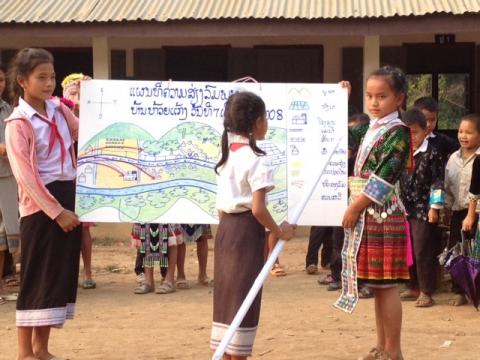Disaster management and livelihoods set to be improved
The Ministry of Foreign Affairs signed a memorandum of understanding in Vientiane on 20 March 2014 with Save the Children in relation to two development projects to be implemented in the three provinces of Luang Prabang, Sayaboury and Bolikhamxay.
The two DRR projects will run from 2014 - 2016 and are being supported by the Australian Department of Foreign Affairs and Trade, Norwegian Agencies for Development Cooperation and New Zealand Ministry of Foreign Affairs and Trade.
Historical data has shown that Laos has faced a number of natural and man-made hazards including floods, droughts, storms, landslides, outbreaks and epidemics, plus unexploded ordnance. In the past ten years, the frequency of storms and flooding has been far greater, resulting in loss of life and extensive economic damage.
The education sector has been particularly vulnerable and natural hazards such as typhoons cause damage to school facilities, furniture, learning materials and equipment. As a result of this type of damage, children are often unable to attend school as the damage was either too extensive, access was made impossible or their schools were turned into temporary shelters.
Save the Children’s DRR programme focuses on laying a strong foundation for risk reduction and preparedness through assessing hazards and risks through community based hazard mapping, and subsequent risk reduction action planning.
To address livelihoods, the project adopts an integrated disaster risk reduction and livelihood approach to increase household level resilience to disasters, by engaging in locally identified improved or alternative livelihood production activities. Households can safeguard against the impact of disasters which will contribute to improving the economic capacity of families and minimising food shortages during a disaster.

Children presenting school DRR map, identifying hazards
In 2014, Save the Children will provide small grants to communities to assist the government to make their environment safer and protect their citizens from the impact of hazards. This can include, for example, the provision of early warning systems or slope stabilisation for protection from landslides.
 Laos
Laos